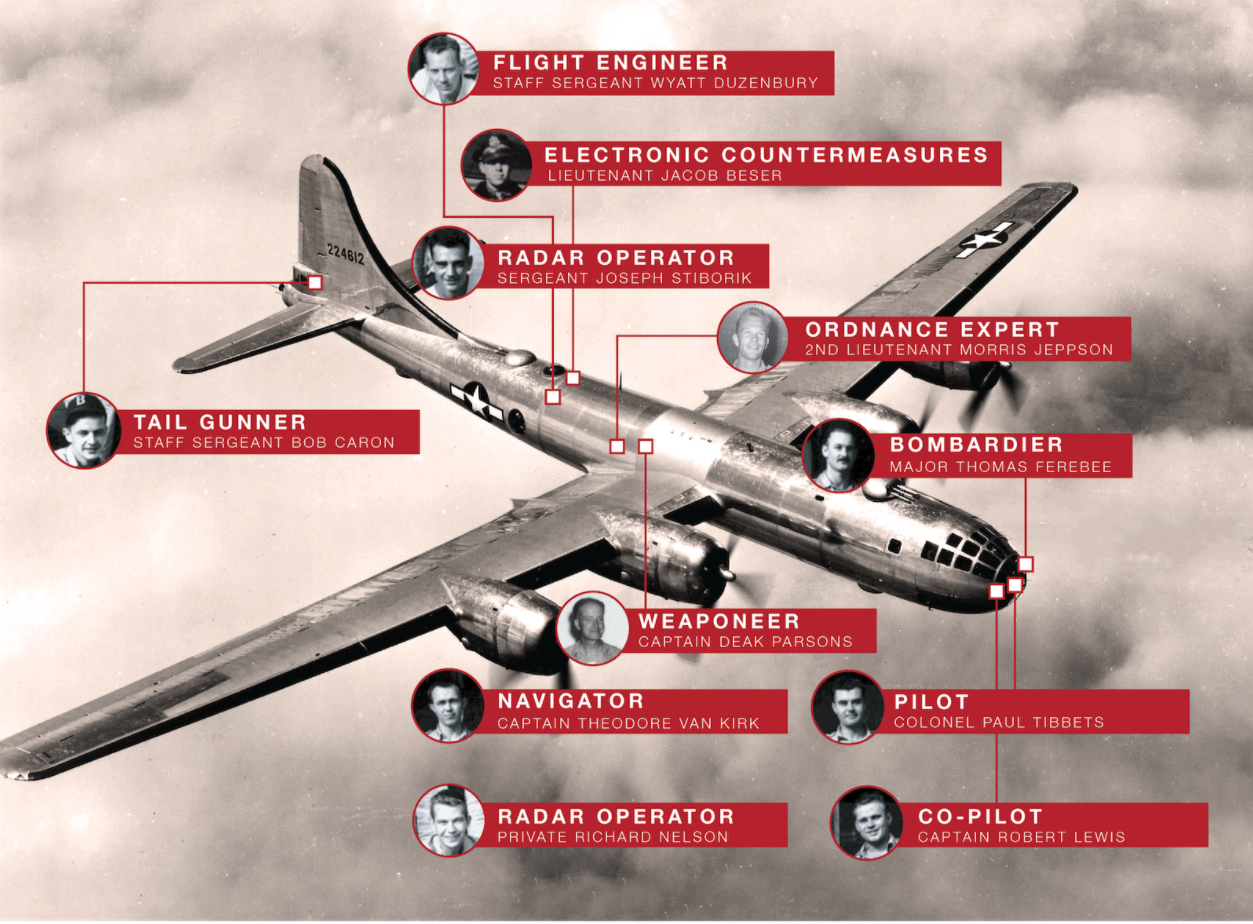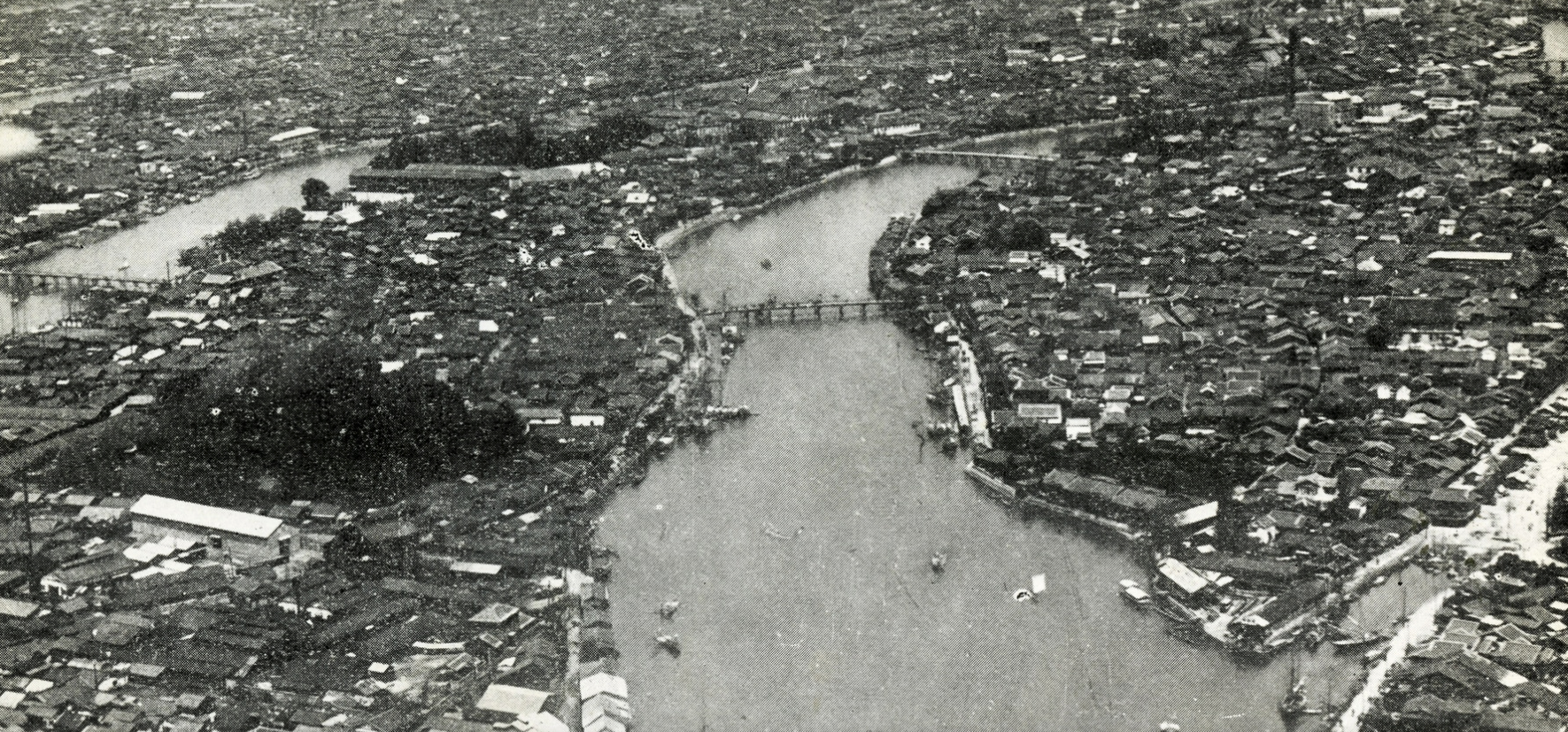This undated Associated Press photo (above) includes most members of the 11-man crew of the Boeing B29 bomber that dropped the atomic bomb over Hiroshima posing in 1945 during World War II. Note: there are name differences between photo above and the chart below.
Standing: Left to right standing,
--Lt. Col. John Porter, ground maintenance officer;
--Capt. Theodore J. “Dutch" Van Kirk, navigator;
--Maj. Thomas W. Ferebee, bombardier;
--Col. Paul W. Tibbets, 509th Composite Group commanding officer, and pilot;
--Capt. Robert A. Lewis, co-pilot; and Lt. Jacob Besser, radar countermeasures officer.
Lower row: Left to right,
--Sgt. Joseph S. Stiborik, radar operator;
--Staff Sgt. George R. Caron, tail gunner;
--Pfc. Richard M. Nelson, radio operator;
--Sgt. Robert H. Shumard, assistant engineer; and
--Staff Sgt. Wyatt E. Duzenbury, flight engineer.
 |
| Hiroshima, August 6, 1945. The bomb named Little Boy was released from 31,000 ft. at 8:15 am and after traveling six miles and 43 seconds later it exploded unleashing 13 to 18 kilotons in the blast. |
 |
| Back from Hiroshima: Boeing B29 dubbed the Enola Gay by pilot Paul Tibbetts after his mom when he visited the plant assembly line in Nebraska lands at Tinian Island, August 6, 1945. |
 |
| Bombadier's view (in nose) using a Norden bombsight. |




No comments:
Post a Comment